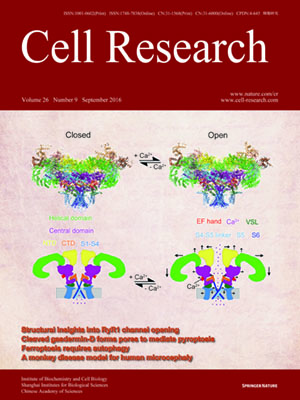
Volume 26, No 9, Sep 2016
ISSN: 1001-0602
EISSN: 1748-7838 2018
impact factor 17.848*
(Clarivate Analytics, 2019)
Volume 26 Issue 9, September 2016: 1021-1032
ORIGINAL ARTICLES
Ferroptosis is an autophagic cell death process
Minghui Gao1,2, Prashant Monian2, Qiuhui Pan2,3, Wei Zhang4, Jenny Xiang4 and Xuejun Jiang2
1Department of Clinical Laboratory, Tenth People's Hospital, Tongji University School of Medicine, Shanghai, China
2Cell Biology Program, Memorial Sloan-Kettering Cancer Center, New York, New York 10065, USA
3Department of Laboratory Medicine, Shanghai Children's Medical Center, Shanghai Jiaotong University School of Medicine, Shanghai, China
4Genomics Resources Core Facility, Weill Cornell Medical College, New York, USA
Correspondence: Minghui Gao, E-mail: gaominghui@hotmail.com; Xuejun Jiang,(jiangx@mskcc.org)
Ferroptosis is an iron-dependent form of regulated necrosis. It is implicated in various human diseases, including ischemic organ damage and cancer. Here, we report the crucial role of autophagy, particularly autophagic degradation of cellular iron storage proteins (a process known as ferritinophagy), in ferroptosis. Using RNAi screening coupled with subsequent genetic analysis, we identified multiple autophagy-related genes as positive regulators of ferroptosis. Ferroptosis induction led to autophagy activation and consequent degradation of ferritin and ferritinophagy cargo receptor NCOA4. Consistently, inhibition of ferritinophagy by blockage of autophagy or knockdown of NCOA4 abrogated the accumulation of ferroptosis-associated cellular labile iron and reactive oxygen species, as well as eventual ferroptotic cell death. Therefore, ferroptosis is an autophagic cell death process, and NCOA4-mediated ferritinophagy supports ferroptosis by controlling cellular iron homeostasis.
10.1038/cr.2016.95
FULL TEXT | PDF
Browse 2152


